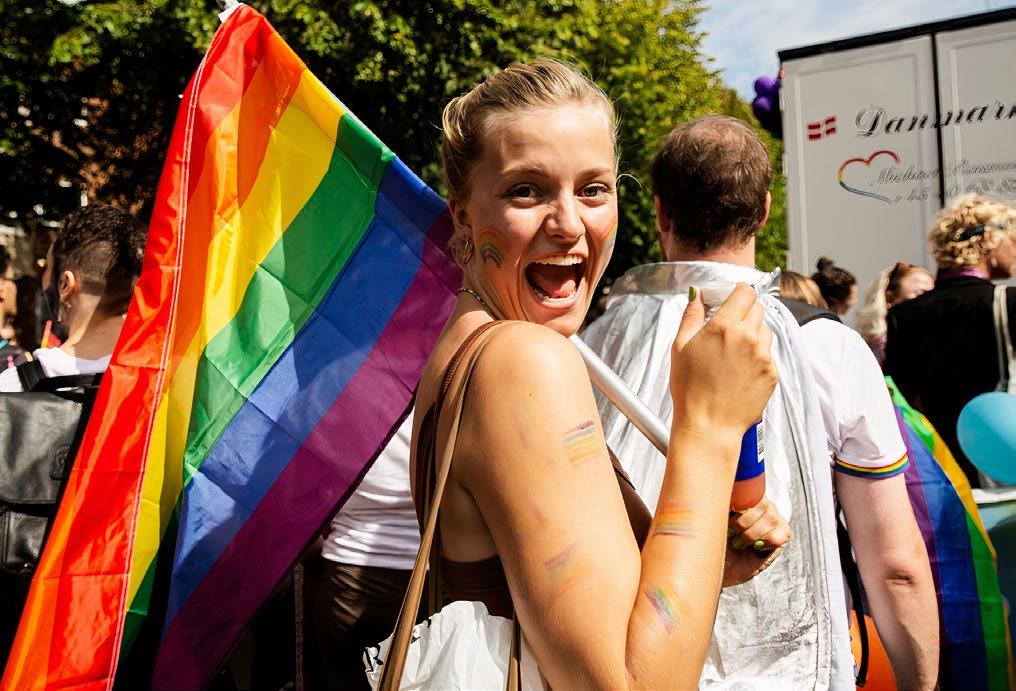
2 minute read
Sustainable campus development
Objectives
2023: DTU has strengthened sustainability on its campuses expressed in terms of built-up environment, nature, and art.
2025: DTU’s campuses and buildings are characterised by sustainability, quality, and profitability.

Development
Below are highlighted some of the many actions and initiatives that have contributed to strengthening sustainability on DTU’s campuses. Towards 2025, monitoring will be done to ensure that the development still entails relevant priorities and activities that are well received by DTU’s surroundings and users.
Selected results 2020-2021:
• Plan certification of DTU Lyngby Campus Plan at Gold level in accordance with the DGNB sustainability class for urban districts. A total of 1.11 km2, and, at that time, the largest urban district with this certification in Denmark.
• New construction, Building 374 Lyngby Campus (houses DTU Skylab), DGNB Gold and, as the first building in Denmark, DGNB Diamond—the award for architectural excellence.
DTU’s policies
• Sub-policy on sustainability on DTU’s campus areas
• Campus plan Lyngby
• Campus plan Risø
• Campus plan Ballerup
• DTU Art Programme 2020-2025
• New construction, pre-certification of Building 357 in Lyngby.
• New construction, Building 310 Lyngby Campus (houses DTU Energy), received the Digitalization Award because the building project utilized the digital opportunities extensively—from initial public procurement procedure through the construction process to handover.
• Launch of DTUplus Art and the Architecture Route. The app contains an interactive map of the two routes and provides an insight into works of art and architecture at DTU in text, images, and audio narratives. The app has been developed by DTU students with support from the Corrit Foundation.
From its formation in 2013, DTU's innovation hub DTU Skylab has experienced great demand for their activities in entrepreneurship, prototyping, and project processes. In 2020, the facilities tripled in size, and the new building was recognized with DGNB awards for sustainability and architecture. It provides a physical setting that supports the vision that DTU Skylab engages students, researchers, and the business sector in an open interdisciplinary ecosystem for technology and business.
From its formation in 2013, DTU's innovation hub DTU Skylab has experienced great demand for their activities in entrepreneurship, prototyping, and project processes. In 2020, the facilities tripled in size, and the new building was recognized with DGNB awards for sustainability and architecture. It provides a physical framework that supports the vision that DTU Skylab engages students, researchers, and the business sector in an open interdisciplinary ecosystem for technology and business.
Diversity, equity, and inclusion
Objectives
2023: All heads of department and HR staff have completed competence development in biasconscious behaviour and bias mechanisms.
2025: DTU aims to ensure that everyone experiences equal education and career opportunities.

DTU’s policies
• DTU’s personnel policy
• DTU Leadership Foundation
• Equal opportunities policy
• Diversity, equity, and inclusion at DTU, including the Gender Equality Plan
• Sub-policy on disabled students at DTU
Table 1: Development in the focus area expressed via indicators for internationalization, age, social and pedagogical accessibility, and gender balance
DTU is an attractive place to study for international students.
DTU is an attractive workplace for international researchers (all types of scientific staff) is an increasingly attractive workplace for young researchers
Social and pedagogical accessibility
DTU is an educational institution that works to ensure that we are physically, socially, and pedagogically accessible of DTU students with functional impairment receiving support under the public scheme Special Educational
DTU works to ensure that the gender balance among newly admitted bachelor students reflects the gender balance among students who meet the admission requirements at DTU (predominantly mathematics A, physics B, chemistry C), where typically 40-45 per cent of a cohort of students in upper secondary education programmes are women.
DTU strengthens the gender balance among employees. For the scientific staff job categories, the aim is a gender balance of at least 30/70 per cent or a proportion corresponding to the previous career level. For both scientific staff and technical/administrative staff, the ambition is that the proportion of male and female applicants, respectively, is in line with the proportion of corresponding new appointments.




